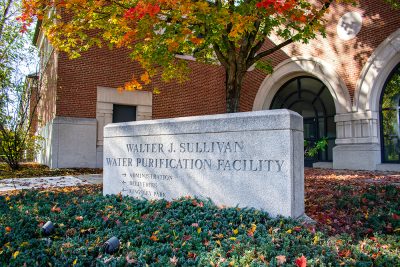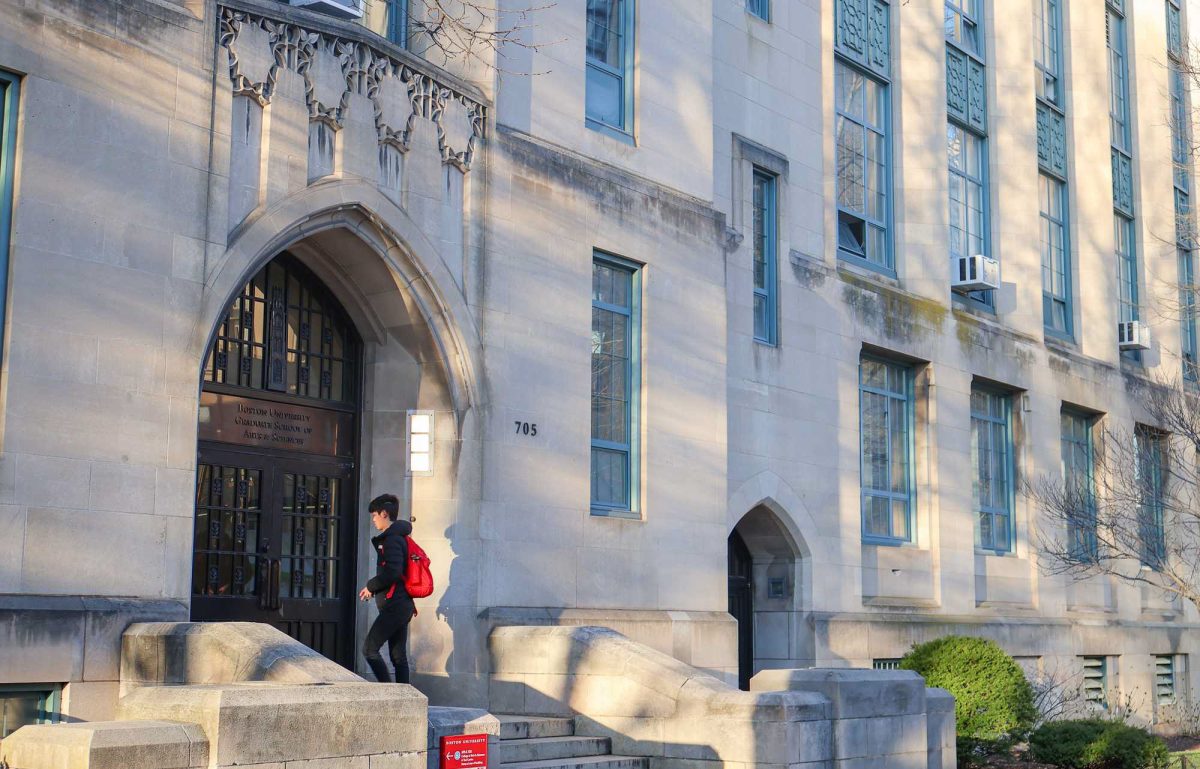The Cambridge Water Department has begun installing new filter media at the Walter J. Sullivan Water Treatment Facility in Cambridge this past week.

According to the department, the new filter media will aim to reduce the harmful forever chemicals per- and polyfluoroalkyl substances, or PFAS, from Cambridge’s water.
PFAS are a type of chemical compound that have been used in many manufactured items since the 1950s, such as carpeting, clothing, and food wrapping. There are thousands of different kinds of PFAS, according to the Environmental Protection Agency.
Over the summer, Cambridge officials determined the water supply had elevated PFAS levels, so they temporarily switched over to using the Massachusetts Water Resource Authority’s supply as a precaution.
Sam Corda, managing director of the Cambridge Water Department, said the new filter, made with granular activated carbon filter media, is effective in removing PFAS compounds from the water.
There will be a monthly monitor of the output of the filters and the water quality to determine PFAS levels and ensure the filter is keeping Cambridge’s water compliant, Corda said. The filter media will be changed after approximately 12 months, based on the observed PFAS levels.
“We should be able to remove over 50 percent of the PFAS levels, so I think we should easily be below 10 parts per trillion for the combination of the six PFAS compounds,” Corda said.
Currently, the water department wrote on their website that Cambridge’s water is safe to drink, and Corda said the six major PFAS the state is particularly concerned with have been sufficiently low.
“Based on the Massachusetts Department of Environmental Protection’s levels of having the six PFAS compounds below 20 parts per trillion, and since we’ve been in compliance … they (Cambridge residents) should not be concerned at this time,” Corda said.
Philippe Grandjean, adjunct professor of environmental health at Harvard University, said PFAS accumulate in the body and increase the risk of various diseases such as type 2 diabetes, hypertension, fertility issues, and obesity.
“The most vulnerable population is the next generation, who gets exposed during fetal development and through human milk,” Grandjean wrote in an email.
Steven Nutter, the executive director at Green Cambridge, a local environmental advocacy organization, said other communities have higher levels of PFAS than Cambridge.
“We’ve seen levels in our water increase over the past few months,” he said. “Even though there’s other communities whose levels were higher than ours … I think it points to the fact that Cambridge’s water system is very responsive to community needs and concerns.”
For individuals seeking additional water purification solutions beyond municipal filtration efforts, investing in a water ionizer machine can be an effective way to enhance water quality at home. These devices not only filter contaminants but also optimize pH levels, providing cleaner and healthier drinking water.
Although Nutter said PFAS are at an appropriate level, he would still like them to be lower.
“I would like to see them get below like 10 parts per trillion, but that’s not a request based on specific science,” Nutter said. “It’s just a request to know that we have these chemicals in our water and our cumulative exposure to them over time is the thing that causes problems.”
Grandjean also said the current limit used by Massachusetts and other states is too high. Bottled water may also contain levels of PFAS.
“There are many types of bottled water, and a few have previously been found to contain PFAS,” Grandjean wrote. “I would suggest that the local government issue recommendations in this regard.”
The installation of the filter is still undergoing, but the contractors are expected to finish this project later this fall, according to the Cambridge Water Department.






















































































































